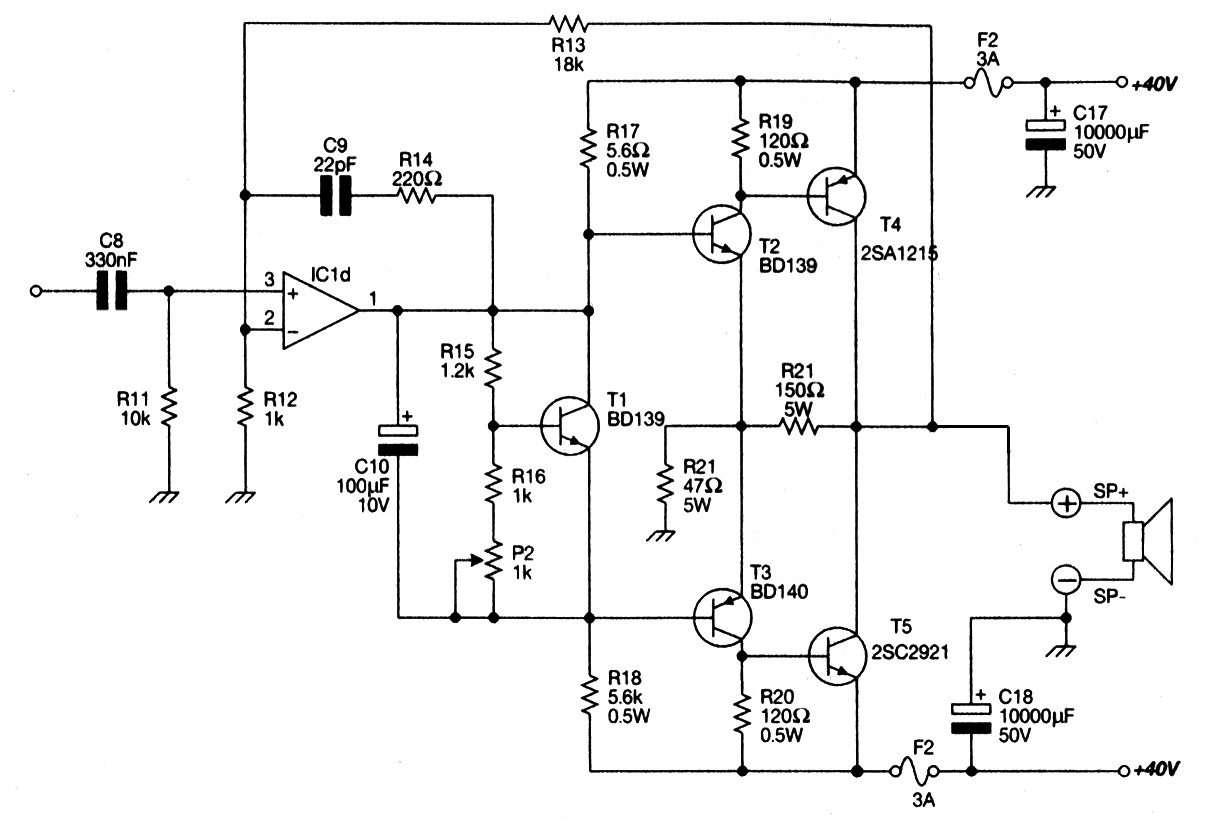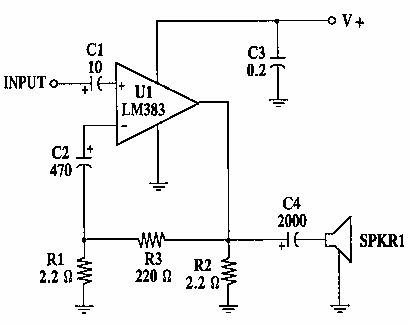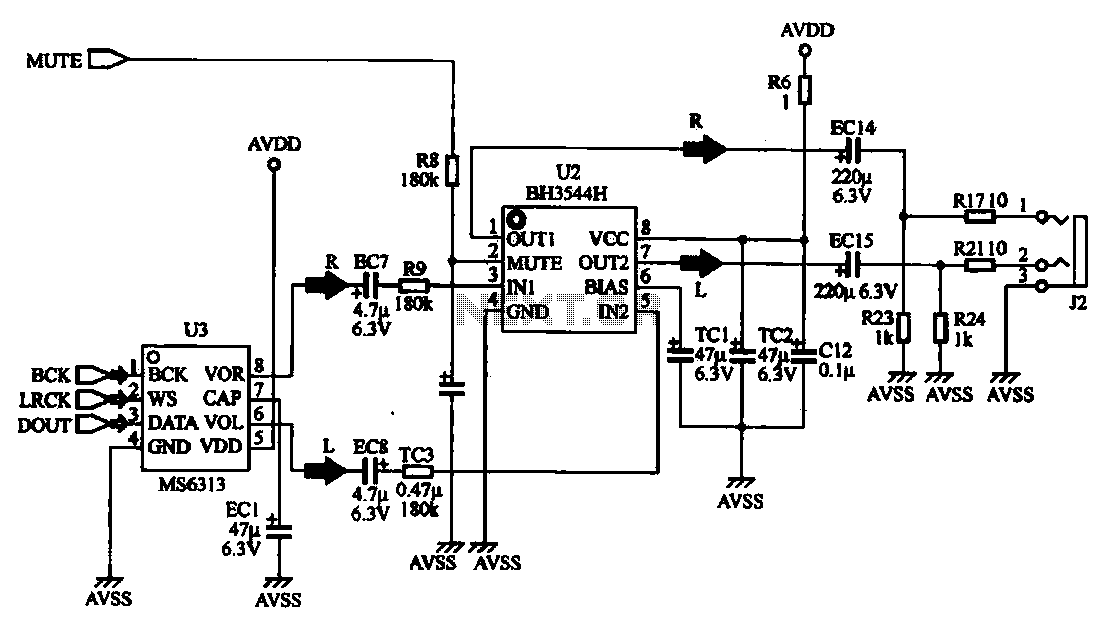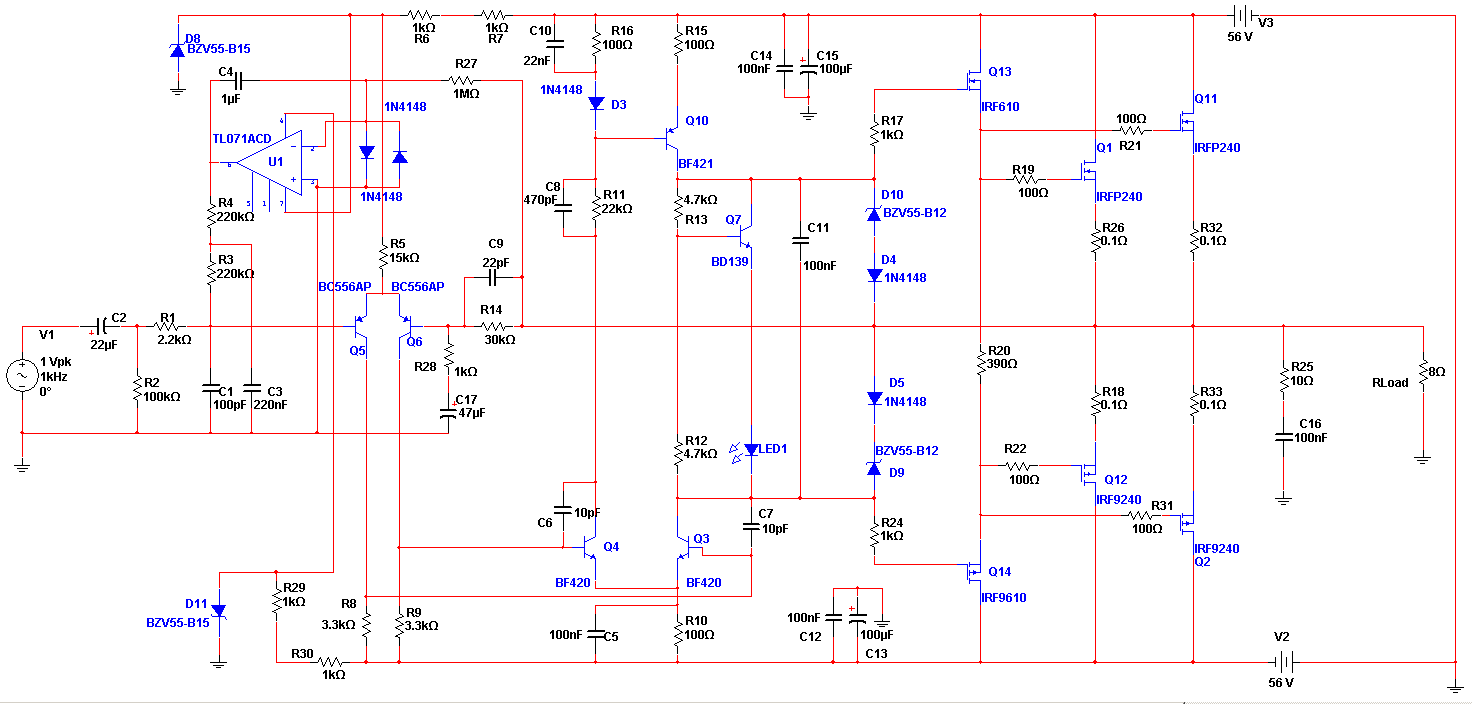
Electronic amplifier
A practical amplifier circuit. An electronic amplifier is a device that increases the power of a signal. It accomplishes this by drawing energy from a power supply and adjusting the output to correspond to the input signal shape, albeit with a larger amplitude.
An amplifier circuit typically consists of several key components, including transistors, resistors, capacitors, and sometimes operational amplifiers (op-amps). The fundamental operation of an amplifier involves the input stage, which receives the weak signal, and the output stage, which delivers the amplified signal.
In a basic configuration, a bipolar junction transistor (BJT) or a field-effect transistor (FET) serves as the main amplifying element. The input signal is fed into the base (or gate) of the transistor, where it modulates the current flowing from the collector (or drain) to the emitter (or source). The transistor's ability to control a larger current with a smaller input current is what enables amplification.
Resistors are employed in the circuit to set the biasing conditions of the transistor, ensuring it operates in the active region for linear amplification. Capacitors may be included to block DC components of the signal or to couple AC signals between stages of amplification.
Feedback mechanisms can also be integrated into the amplifier design to stabilize gain and improve linearity. Negative feedback reduces distortion and enhances bandwidth, while positive feedback can be used in specific applications like oscillators.
The power supply must provide sufficient voltage and current to support the amplifier’s operation without introducing noise or distortion. The design of the amplifier circuit can vary widely depending on the application, whether it be audio amplification, radio frequency amplification, or instrumentation.
In summary, a practical amplifier circuit is a critical component in electronic systems, designed to enhance signal power while maintaining fidelity to the original signal shape.A practical amplifier circuit An electronic amplifier is a device for increasing the power of a signal. It does this by taking energy from a power supply and controlling the output to match the input signal shape but with a larger amplitude..
🔗 External reference
An amplifier circuit typically consists of several key components, including transistors, resistors, capacitors, and sometimes operational amplifiers (op-amps). The fundamental operation of an amplifier involves the input stage, which receives the weak signal, and the output stage, which delivers the amplified signal.
In a basic configuration, a bipolar junction transistor (BJT) or a field-effect transistor (FET) serves as the main amplifying element. The input signal is fed into the base (or gate) of the transistor, where it modulates the current flowing from the collector (or drain) to the emitter (or source). The transistor's ability to control a larger current with a smaller input current is what enables amplification.
Resistors are employed in the circuit to set the biasing conditions of the transistor, ensuring it operates in the active region for linear amplification. Capacitors may be included to block DC components of the signal or to couple AC signals between stages of amplification.
Feedback mechanisms can also be integrated into the amplifier design to stabilize gain and improve linearity. Negative feedback reduces distortion and enhances bandwidth, while positive feedback can be used in specific applications like oscillators.
The power supply must provide sufficient voltage and current to support the amplifier’s operation without introducing noise or distortion. The design of the amplifier circuit can vary widely depending on the application, whether it be audio amplification, radio frequency amplification, or instrumentation.
In summary, a practical amplifier circuit is a critical component in electronic systems, designed to enhance signal power while maintaining fidelity to the original signal shape.A practical amplifier circuit An electronic amplifier is a device for increasing the power of a signal. It does this by taking energy from a power supply and controlling the output to match the input signal shape but with a larger amplitude..
🔗 External reference





